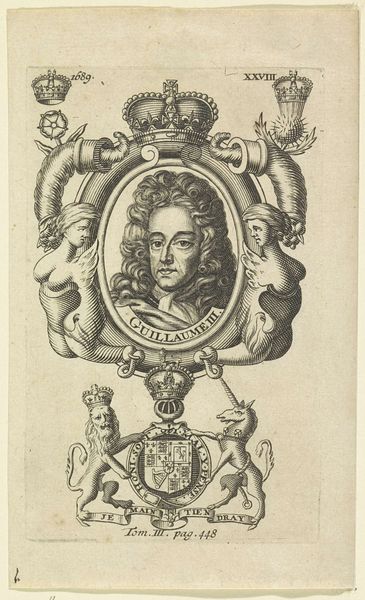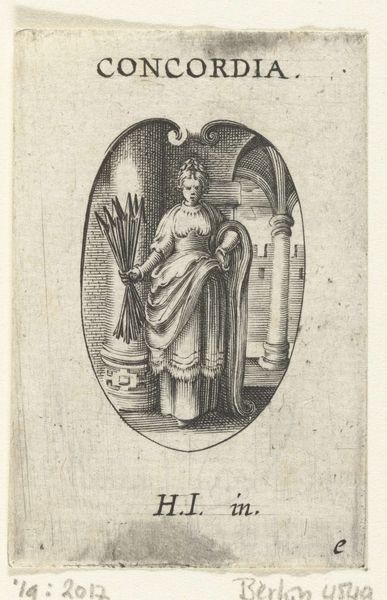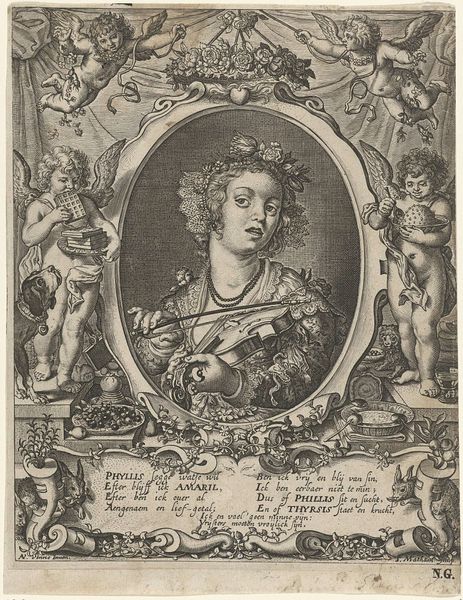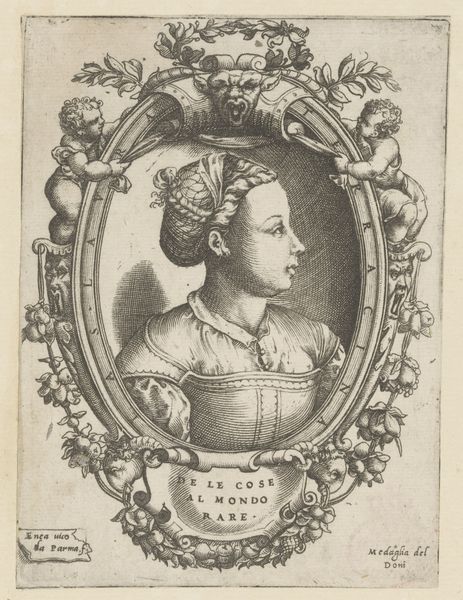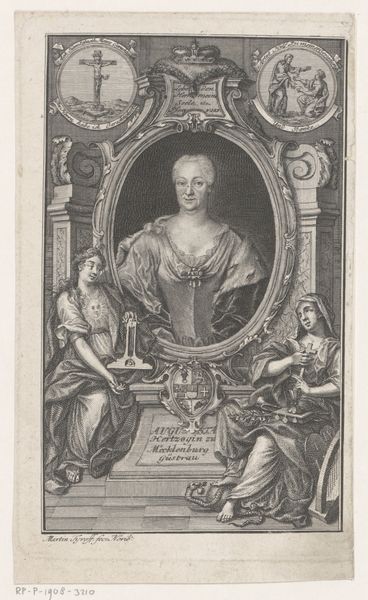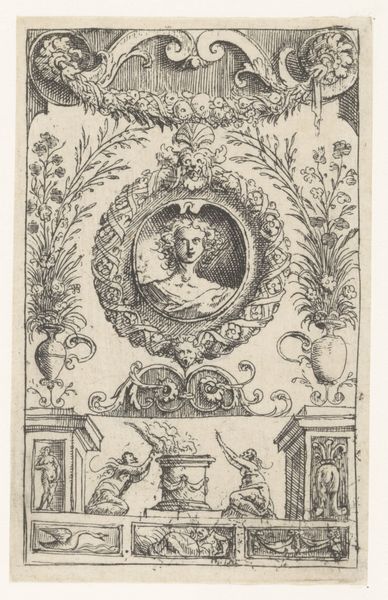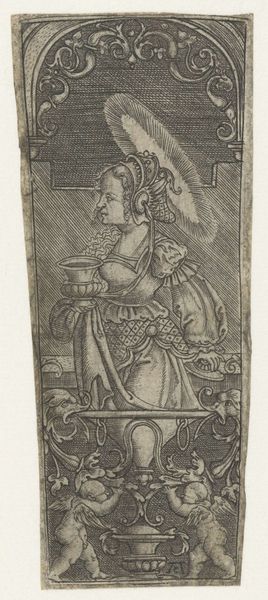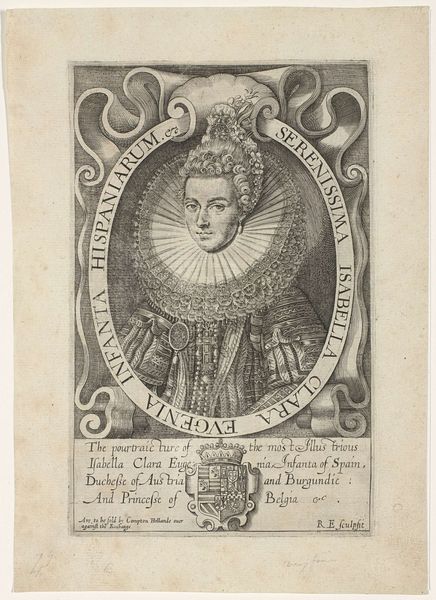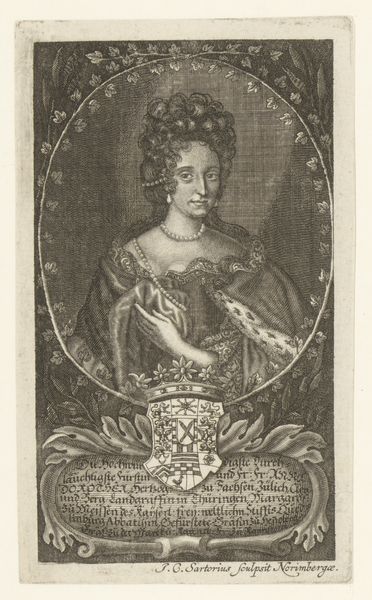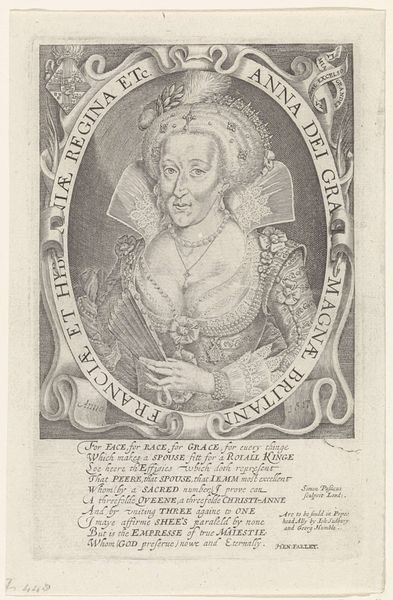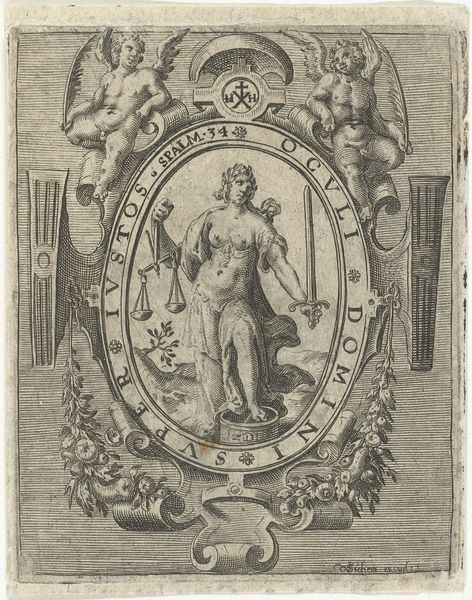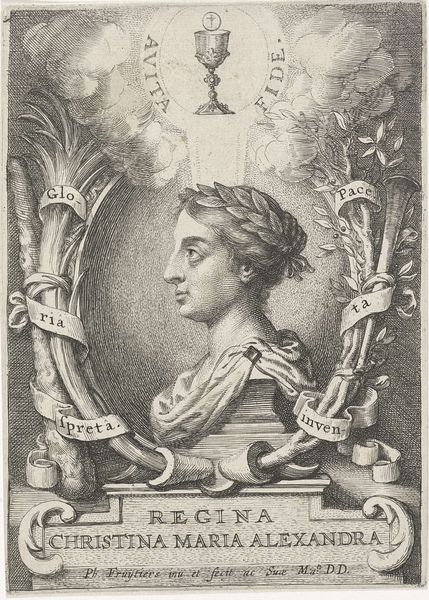
Dimensions: height 141 mm, width 77 mm
Copyright: Rijks Museum: Open Domain
Curator: Looking at this engraving, I'm struck by how formally the image presents itself, like an official proclamation or declaration. Editor: Yes, that rigidity is typical of this kind of royal portraiture. Here we have "Portret van Maria II Stuart" by James Fittler, an engraving produced sometime between 1758 and 1835. Note the prominent use of line work to create texture and shadow, especially in her hair and dress. Curator: The symbolic weight is heavy here, isn't it? You can almost feel the weight of the crown—actually several crowns are shown—and the royal coat of arms with the lion and unicorn at the bottom. There’s also a strong symmetry; each motif mirroring on either side within the overall composition. This speaks to order and control. Editor: Indeed. The choice of symbols matters immensely here. Crowns, of course, denote authority. The angels flanking the portrait subtly link Maria II with notions of divine right, a prevalent idea in the monarchical societies. The imagery reinforces this cultural narrative about rulers chosen and sanctioned from a divine power. Curator: And it does evoke an idealized vision, doesn't it? Note how the sharp, unwavering lines contribute to the air of immortality. There is little vulnerability presented here; it reads as strategic image making. What’s interesting is to think of this print circulating widely, acting almost as propaganda in a way. Editor: Absolutely, these images played a critical role in shaping public perceptions of the monarchy. By controlling the narrative presented to the public, they influenced and strengthened social and political structures. It's art as a tool of statecraft. The formal stiffness isn’t just stylistic, but politically motivated. Curator: This certainly shifts how one might approach the engraving today. I am considering the extent to which such symbolic systems still echo across the landscape of the contemporary visual media, albeit often transformed and reconfigured. Editor: Well, seeing it through that lens definitely deepens one’s understanding of the ongoing relevance of historical images.
Comments
No comments
Be the first to comment and join the conversation on the ultimate creative platform.
